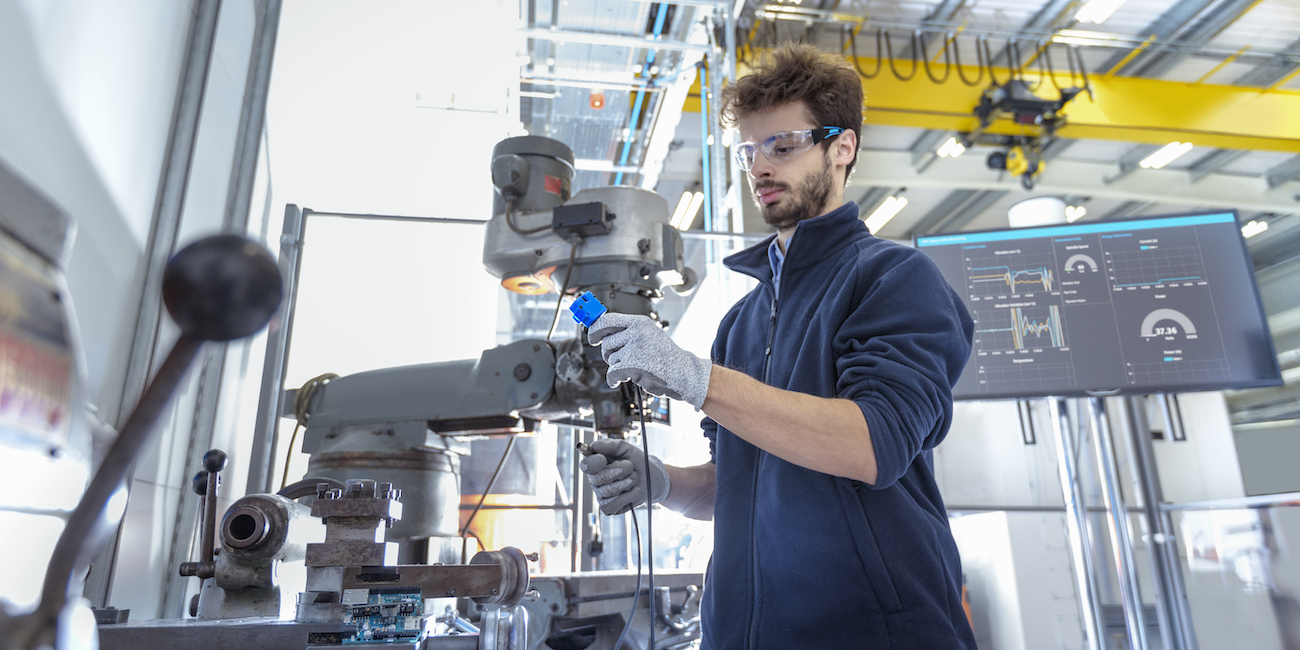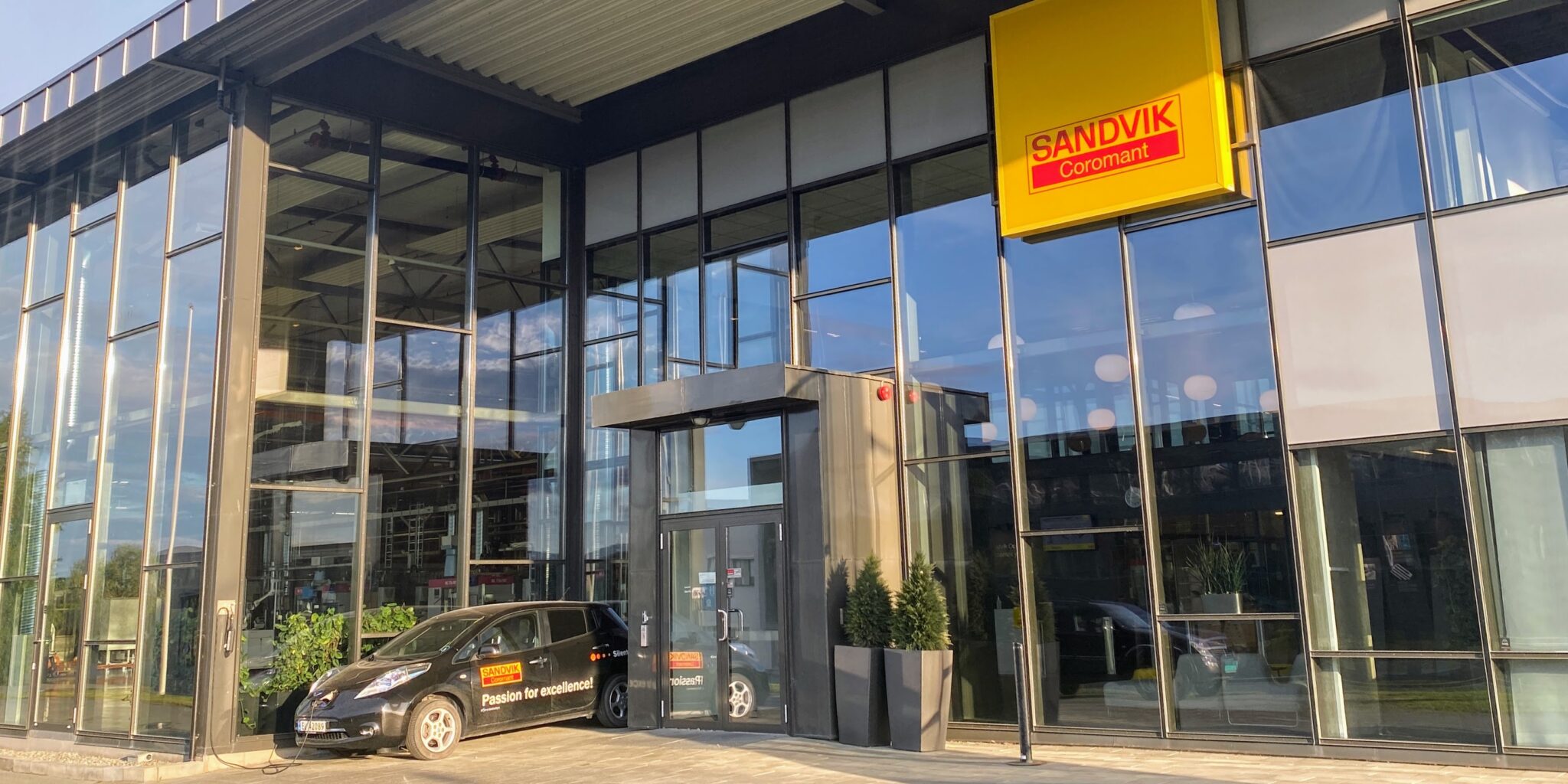
Growing sustainably with Lean Thinking
CASE STUDY – The story of Norwegian furniture manufacturer Haugstad Møbel that, thanks to Lean Thinking, was able to transform its culture and unlock the potential of sustainable growth.
Words: Eivind Reke
Back in 2016, Haugstad Møbel was a small producer of wooden furniture. If you entered the factory, not much had changed over the last 30 years. It had been 70 years since the company was first started. At that time, the owners saw potential in the products they were making and quickly decided to move the factory to new facilities. A new factory building was constructed and opened in 1963, and investments were made in modern machining equipment, continuing all the way up to 1989. After that, everything settled, and turnover stayed more or less the same for 30 years.
There had always been a "monozukuri" culture throughout the company. So much so that when Steinar Gulaker took over as CEO in 2015, it was expected of him to choose a machine as his own and engage in hands-on production. However, monozukuri without hitozukuri – the passion for making people – leaves a company standing still. And Steinar knew that Haugstad needed to move forward. His mission was to build on the passion for making things, instill a passion for developing people, and create a culture of "Kotozukuri" – the passion for making things happen. And things were about to happen.
In 2017, Haugstad Møbel embarked on the first of three research projects with SINTEF Manufacturing, financed by the Norwegian Research Council. The initial project explored the possibility of integrating digital technology into old production equipment. It provided Steinar with an opportunity to study modernized factories across Europe that were producing similar products to Haugstad’s. What he observed made him realize that it wasn’t wages that were preventing Norwegian companies from competing. Haugstad was decades behind the best companies in Europe when it came to applying both modern production technology and lean production principles.
MAKING THINGS EASIER
Haugstad had an old, manual production cell for gluing and pressing laminate onto the wooden boards, which were later cut to make parts for the finished product. The cell consisted of four machines and required four operators to produce a hundred plates per day. Given the heavy lifting involved, many operators were struggling with their physical health. When Steinar suggested using this line as an example of how both productivity and production conditions could be improved, the team was not overly enthusiastic. However, once the new line was in place, nobody wanted to return to the old way of working.
The new line was fully automated, with all processes seamlessly coupled together in a single piece flow, eliminating the need for heavy lifting. Now, a single operator could run the entire line and produce 110 plates per hour. Despite the initial skepticism about this new and modern approach to manufacturing, a transformation was unfolding. And that was just the beginning.
A MODERN FACTORY

The visits to European competitors had been eye-opening for senior managers at Haugstad. Touring modern factories equipped with contemporary production systems designed for both flow and flexibility made them realize that their outdated equipment, poorly maintained over many years, left them with little chance of progressing. The lean ideal is, of course, to start with what you have, make it work, and ensure it flows through problem-solving. However, as the sensei story goes: “TPS good. Sometimes: Be flexible.” And in Haugstad’s case, most of the old equipment was beyond repair and investment was needed.
Fortunately, the owners and their bank saw an opportunity in Haugstad. Passionate individuals who genuinely cared about their work and the company were present. Therefore, the necessary investment in modern, digitally integrated production equipment to grow the company was approved. What Haugstad soon discovered was that brand-new solutions come with brand-new problems, and the journey from designing the new production lines to getting them up and running as intended proved to be long and winding.
First, Covid struck, and lead-times of many of the machines suddenly became much longer than initially anticipated. The first test run was supposed to happen in October 2020, but it took another eight months to ship enough production equipment to Norway and set it up for testing. By the end of 2022, only one out of three new production lines were fully operational, and it would take a few more months to get the other two up and running. In fact, Haugstad is still waiting for one of the new machines to arrive, but the producer lent them a similar one, free of charge. Finally, in the summer of 2023, three years after the planned first test run, the new production lines were finally up and running. In the process of implementing the new equipment Haugstad discovered new stuff doesn't change old habits, and new equipment capacity is useless unless you also develop people, the market, and fix internal logistics and distribution.
THE SENSEI VISIT
Back in the autumn of 2021, Steinar invited lean sensei Michael Ballé to visit the factory during his road trip around Norway. I had previously teased Steinar and Olav (his production planner), telling them that, for two guys who claimed not to like putting stuff on pallets, they sure had a lot of stuff and a lot of pallets lying around. Following the gemba walk, Steinar asked Michael about his thoughts on the new production equipment, but Michael wasn't particularly interested in that. The role of the sensei is to help CEOs find and confront their real issues, and Michael identified that the primary concern wasn’t the new production equipment, but logistics – something that Steinar needed to address.
As a first step, Michael suggested that Steinar entirely separate logistics from production, to clear up the clutter. During the visit, parts and pallets were scattered everywhere, with the prevailing approach being “if you find a free spot, put it there”. The result was a disorganized factory with operators constantly moving back and forth to locate parts.
Following Michael’s advice, Steinar took immediate action to separate logistics and production. The gemba walk had occurred on a Tuesday, and by the weekend, Steinar and a few others had relocated all the parts to a designated area intended to serve as the internal logistics department of the factory. In the process, they also moved the manual assembly stations into the new factory, establishing an assembly area between the production line and the distribution area. Steinar further reorganized the factory into three distinct functions: Logistics, Production, and Distribution, with clearly defined supplier/customer relationships between the functions. This step was just the beginning of a journey that allowed Haugstad to realize the full potential of their investments.
FROM LEAN PROCESSES TO A LEAN STRATEGY
Steinar was already attempting to develop lean processes, create flow, and implement 5S, but the breakthrough came after the sensei visit. When Steinar began his journey with Haugstad, his strategic framework was informed by the traditional 4D: Define, Decide, Drive, Deal. However, after working with two different lean sensei, he realized the need to change his approach. The investments made were necessary and intelligent, but a different strategy was required to realize their full potential. The 4F framework of lean strategy provided Steinar with a perfect thinking frame moving forward, one that relies on accepting challenges and committing to change by involving everyone in the organization in the creation of new ways of working.
For Steinar and Haugstad, the Toyota Production System became the go-to framework, acting as an educational system for developing people and processes simultaneously. One gemba walk after another, Steinar and his sensei would engage with operators and team leaders, pointing out areas where the process was not working as it should and providing problem-solving tools to empower front-line people to form their own solutions. As things progressed and problems were solved, they raised the bar.
In the CNC shop, one of the two remaining production cells not directly connected to the main production lines, the team struggled to cope with a three-week backlog of orders and could not see a path to solving this issue. Sales were increasing, so reducing the load on the cell was not an option. Previously, a significant discussion in the daily management obeya had convinced Olav, the production planner, to move from weekly scheduling to daily scheduling of kitchens. The effect was extraordinary, as it helped everyone in the production process make better decisions at each step and avoid sub-optimizing their own processes.
As the results from this change were discussed and celebrated, the sensei mentioned that the goal should be hourly scheduling, indicating there was still a long way to go. Ultimately, this became the key that unlocked the CNC shop. After a discussion with the CNC team, Olav, Steinar, and the team came up with an hourly production target and gradually (first slowly and then quickly) managed to eliminate the backlog.
With capacity increased from 2,000 parts per week to 2,300 parts per day, the number of orders shipped has also increased fivefold. Once again, visualizing the information flow with greater precision has proven instrumental in helping the distribution team find a path to handle the increase in orders without building up large amounts of inventory. The same approach has assisted the assembly team in aligning with their downstream customer, contributing to better overall alignment and coordination throughout the entire factory.
BACKSLIDES AND PUSHBACKS: FIXING THE TEAM
Like all lean transformations, Haugstad's journey has been full of ups and downs. A key insight from Lean CEO at Aramis Auto, Nicolas Chartier, is that the first step of any lean transformation is fixing the team. It involves giving people the right type of jobs, identifying those who are excited about Kaizen, developing highly skilled team leaders, and moving those who don't have what it takes to work in an organization that wants to change itself. This challenge became evident to Steinar as time passed. Together with his sensei, he invested in people he believed had the necessary qualities but, more often than not, they ended up disappointed.
The role of a production manager proved to be particularly challenging to fill, as the old idea of optimizing each production step by instructing everyone and trying to control the outcome was deeply ingrained. After several unsuccessful attempts, Steinar eventually found the right person in Olav, the production planner. Developing a strategic theme of finding the right job for different employees in Haugstad emerged as a means to prevent backslides and counteract pushbacks, and Steinar seemed to have a knack for it. A former CNC operator who initially didn't buy into the idea that the following process is your customer is now excelling in programming.
DON'T STOP BELIEVING (HOLD ON TO THAT FEELING)
It's not very often that one finds a manufacturing company the size of Haugstad Møbel that invests in the future as they do. In addition to four people working full-time on digitalization, two product designers are responsible for developing the next generation of sustainable furniture. However, Haugstad isn’t solely focused on the future of their own products and processes. Just a 20-minute drive from the main factory, they have established a Circular HUB – a learning factory where kids aged 14-15 come to learn about the circular economy by creating their own start-ups, products, and circular business models. Besides serving as a learning factory, the Circular HUB also functions as a re-sell, re-furbish, and re-use facility, breathing new life into old products, some of which are unused and still in their original packaging.
For lean practitioners, this is the future. Simply improving the linear business model is no longer sufficient. To confront the environmental crisis, we must employ our collective lean skills to develop and enhance new and innovative circular business models. This entails leveraging lean’s 4F framework as an alternative to the traditional 4D, challenging and supporting, rather than instructing and controlling. Then, through Yokoten, our distinctive approach to knowledge sharing and learning, we have the unique opportunity and responsibility to contribute to a sustainable future, both locally and globally. Let companies like Haugstad Møbel inspire us to be the change we want to see in the world.
THE AUTHOR

Read more


FEATURE – The introduction of a new process can be disruptive to an organization’s improvement efforts. But what if the process were designed to be lean from the start?


NOTES FROM THE (VIRTUAL) GEMBA – In the last of her series of virtual gemba walks, the author learns how a hospital in the Caribbean island of Martinique relied on Lean Thinking in its fight against the Coronavirus.


THE TOOLS CORNER – This month, the author discusses how we can ensure quality problems are identified early, tackled swiftly and prevented from reoccurring.


NOTES FROM THE GEMBA – It can take time to challenge our misconceptions and set off on a lean journey. Once we get it, however, it’s hard to stop the improvements, as this French company found out.
Read more


FEATURE – We are used to approaching strategic thinking as if our organization was in a position of stability and dominance. What if we started to look at it as creating better deals with all parties involved?


FEATURE – Through kaizen, people can directly participate in the improvement work. But without a manager’s clear responsibility and follow-up, they will left alone with the consequences of the introduced changes.


CASE STUDY – A people-centric approach to work, improvement, and the adoption of automation is allowing this Norwegian company to thrive in a changing industry and environment.


CASE STUDY – This Norwegian firm learned that allowing every person and area to move up their own lean learning curve can steer the business away from fire-fighting and towards more strategic thinking.

